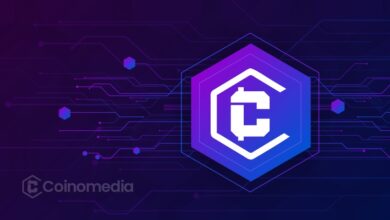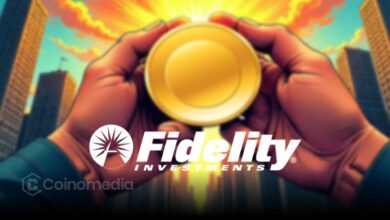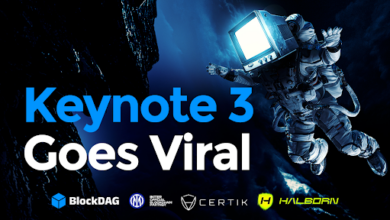Four Angles to Analyze the Difference between Dollar RWA and Other RWA: What Alpha Opportunities Can Be Captured from It?
This article will analyze the differences between the two from four perspectives, helping you understand the current state and challenges of non-currency RWA, and thus seek opportunities to capture Alpha in the RWA race.
Original Article Title: "Analyzing the Differences Between Dollar RWA and Other RWA from Four Perspectives: What Alpha Opportunities Can Be Captured?"
Original Article Author: ABC Alpha Researcher
Recently, while the cryptocurrency market has been in a prolonged slump, there has been a growing discussion about RWA (Real World Assets).
Some argue that RWA is a trillion-dollar market. The reason being, "USDT and USDC are the earliest and most successful dollar RWAs, with a market capitalization approaching $300 billion. A significant amount of off-chain real-world assets such as properties, stocks, and bonds can be brought onto the chain, presenting a huge opportunity."
While this may sound reasonable at first glance, upon closer examination, there are issues. RWA is not a one-size-fits-all concept; there is a significant difference between dollar RWA and other RWA, to the point where they are not even comparable. For other RWA to achieve rapid growth, they will still need to discover their own development paradigm while learning from dollar RWA.
As an investor looking to identify Alpha opportunities in the RWA space, it is crucial to first clarify the differences between dollar RWA and other RAW.
Below, ABC Alpha will analyze these differences from four perspectives, allowing you to see the current status and challenges of non-monetary RWA and thereby identify Alpha opportunities in the RWA space.
1. Use Case: Dollar RWA Demand Is Clear, While Most RWA Demand Remains Ambiguous
USDT and USDC are digital extensions of the US dollar, serving the cryptocurrency market's transaction settlement, cross-border payment, and hedging needs. These use cases are high-frequency and essential. For example, in countries experiencing severe inflation (such as Argentina or Turkey), dollar stablecoins have become a wealth preservation tool, with high user demand.
In contrast, other RWA, such as real estate tokenization, primarily aim to achieve global financing or enhance asset liquidity through blockchain. These use cases are low-frequency, with a limited user base. Players in the crypto market are more inclined to invest funds in native assets such as BTC, ETH, or meme coins. Assets with good off-chain yields already have established financing channels, while assets with poor yields actively seek on-chain solutions, further limiting the market size.
Summary: Dollar RWA serves as the "supplier" of liquidity to the crypto market, while other RWA are the "demanders" seeking liquidity. Despite sharing a name, they differ fundamentally. So, are there other non-monetary RWAs that can provide liquidity to the crypto market?
2. Compliance and Trust: USD RWA Matures, Most Other RWA Still Lacking
Regulatory Compliance
USDC is issued by regulated Circle, with its reserves regularly audited, complying with US monetary regulations; Although USDT has been surrounded by controversy, it has gained market trust through deep collaboration with exchanges. The regulation of other RWA, however, is much more complex. For example, on-chain real estate involves legal ownership confirmation and cross-border legal issues, currently lacking unified standards, making rapid scalability difficult.
Trust Foundation
The core of RWA is the tokenization of credit. USD RWA is pegged to the US dollar, backed by the US national credit, with extremely high user trust. In contrast, other RWA relies on the credit of the off-chain asset issuer. For example, tokenizing real estate requires authoritative institutions to prove ownership, otherwise users are reluctant to believe that the on-chain tokens correspond to real-world assets.
Summary: The trust foundation of USD RWA is unparalleled, while other RWA are difficult to reach. RWA categories with lower compliance thresholds and easy-to-establish trust are only worth paying attention to in the short term.
3. Technological Implementation: USD RWA Relatively Simple, Other RWA Relatively Complex
The technological logic of USD stablecoins is clear: on-chain issuance and redemption, with low barriers to entry. The US dollar and US treasuries are standardized assets, with low audit and tracking costs. On the other hand, other RWA involve complex processes such as asset valuation, dividend distribution, clearing, and also require oracles for real-time validation of off-chain data. The onboarding processes for different assets (such as real estate) vary greatly, with high compliance standards and technological implementation difficulties, leading to slow development.
Summary: Non-standard RWA need to customize standards for each asset class, making short-term breakthroughs challenging. In contrast, RWA such as gold and bonds, which are relatively easy to standardize, are relatively straightforward.
4. Driving Force: USD RWA Bottom-up, Other RWA Top-down
The rise of USDT originated from user demand: fiat-to-crypto trades were restricted by regulations, and exchanges introduced USDT trading pairs to solve the issue. With increased usage, it evolved into digital dollars, integrating into DeFi and cross-border payments. This is a result of market demand from the bottom up.
On the other hand, real estate, stocks, and other RWAs are mostly driven by large institutions, driven by financing or liquidity needs, following a top-down approach. The participation of ordinary users and entrepreneurs is low.
Summary: The bottom-up development approach is also more suitable for the characteristics of the Crypto industry. RWA projects that focus more on community development are also more likely to attract users.
Summary and Outlook
The success of USD-backed RWAs such as USDT and USDC is attributed to clear demand, high liquidity, strong trust foundation, low technical barriers, and grassroots market drive. Other RWAs, however, are constrained by ownership mapping challenges, regulatory uncertainty, technical complexity, and resistance from traditional interests, making their development more challenging.
In the future, for other RWAs to break through, they need to focus on the following areas:
1. Regulatory Collaboration: Promote cross-border legal recognition of on-chain asset ownership.
2. Compliance Framework: Establish segmented standards by asset type to expedite the compliance process.
3. Infrastructure: Enhance RWA oracles, issuance platforms, and cross-chain liquidity protocols.
As investors, it is essential to differentiate between USD-backed RWAs and other RWAs and understand the current development status of the RWA track.
First and foremost, attention should be paid to the development of the US RWA compliance framework. Simultaneously, focus on RWA assets that are easily standardized and transparent (such as gold and bonds). Currently, emphasis should be on infrastructure-type projects in the RWA track, such as RWA oracles, RWA issuance platforms, RWA liquidity protocols, and more.
Disclaimer: The content of this article solely reflects the author's opinion and does not represent the platform in any capacity. This article is not intended to serve as a reference for making investment decisions.
You may also like
PayPal Adds SOL and LINK for U.S. Customers
PayPal now supports Solana (SOL) and Chainlink (LINK) for U.S. users, marking a big step forward for crypto adoption.More Crypto Choices on PayPalWhy This Matters for the MarketA Bullish Signal for Crypto

Fidelity Unveils No-Fee Crypto IRA for U.S. Investors
Fidelity introduces a no-fee crypto IRA, enabling U.S. adults to invest in BTC, ETH, and LTC with secure cold storage custody.Secure Storage and Trusted CustodyEasy Access and Tax Benefits

Can BlockDAG Hit $1? Viral Keynote 3 & 10 CEX Listings Make a Strong Case
BlockDAG’s hybrid DAG + PoW model, 800K+ mobile miners, & $5M raised in 48 hours put it on track for $1. With DeFi features ready & 10 CEXs lined up, BDAG is the Layer 1 to keep an eye on.Hybrid DAG + PoW Architecture Offers Performance With SecurityWith $0.0248 Entry Point, a $1 Target Is Within RangeMaking Mining Accessible to EveryoneThis is a Key Accumulation Phase

S&P 500 Falls Today While Bitcoin Holds Steady With Trump’s Tariff Announcement
